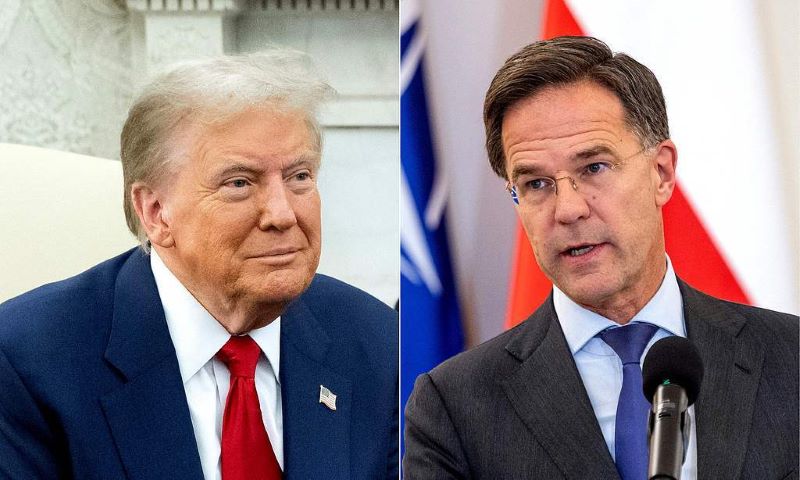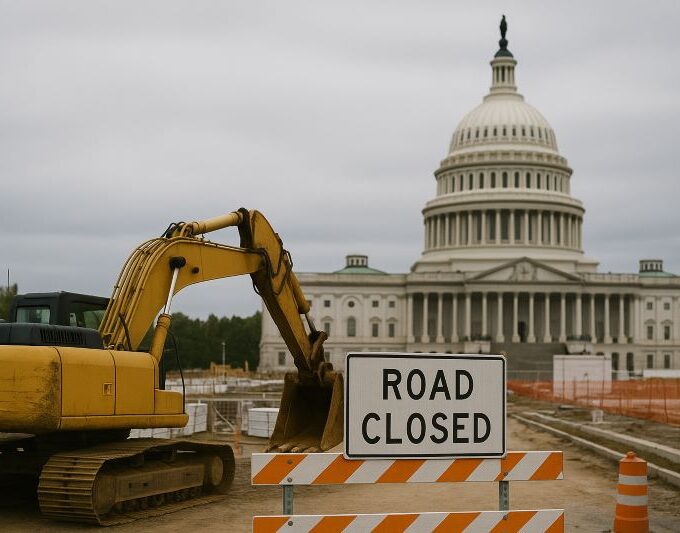The growing contention between the United States and other NATO countries over defense spending is heating up. In a televised interview aired on December 8, U.S. President-elect Donald Trump once again threatened that if NATO allies fail to meet defense spending “standards,” Washington could “absolutely” withdraw from NATO. Previously, Trump had demanded that NATO member states raise their defense spending to 3% of GDP. Newly appointed NATO Secretary-General Mark Rutte warned in response that if Washington exits the military alliance, the U.S. risks isolation in “a harsh and unforgiving world.” While most NATO countries have already increased their defense budgets following the outbreak of the Russia-Ukraine conflict, many are now grappling with economic downturns and other challenges.
Can these countries continue to boost military expenditures? If they fail to meet Trump’s demands, will the U.S. truly “exit NATO”? Between NATO without the U.S. and the U.S. outside NATO, who stands to lose more?
The Russia-Ukraine Conflict Helps 23 NATO Countries “Meet the Target”
Former U.S. President Donald Trump has repeatedly called on NATO allies, whom he accused of “taking advantage of America,” to increase their defense spending. He proposed raising the defense expenditure threshold from 2% of GDP to 3%, or even 4%.
According to the latest reports from American and European media, after the 2014 Crimea crisis, NATO countries agreed to allocate 2% of their GDP to defense by 2024. At that time, only three member states met the target. By 2021, the number had risen to six. In February this year, former NATO Secretary-General Jens Stoltenberg announced that 18 NATO members were on track to meet the 2% benchmark by 2024. A report released by NATO four months later revealed that 23 of the alliance’s 32 members had already met or exceeded the 2% threshold (excluding Iceland, which has no standing military). Of these, 16 are also EU members.
In terms of the proportion of defense spending to GDP, Poland leads NATO at 4.12%, followed by Estonia (3.43%), the United States (3.38%), Latvia (3.15%), and Greece (3.08%). The eight countries failing to meet the target include Spain (1.28%), Slovenia (1.29%), Luxembourg (1.29%), Belgium (1.3%), Canada (1.37%), Italy (1.49%), Portugal (1.55%), and Croatia (1.81%).
An analysis by the U.S.-based think tank Atlantic Council attributes the sharp increase in NATO defense spending to the Russia-Ukraine conflict that began in February 2022. This war has prompted NATO’s European members and Canada to increase their defense budgets by an unprecedented 18%. Overall, NATO countries currently spend 2.71% of GDP on defense, surpassing the alliance’s minimum benchmark.
As The Washington Post notes, the NATO countries exceeding the 2% target are often those bordering Russia or close to the frontlines of the Russia-Ukraine conflict. For example, Poland shares borders with Russia’s Kaliningrad Oblast in the north and Ukraine in the southeast. In contrast, nations like Germany, Italy, and Canada, farther from the conflict, have not yet met the target. Smaller nations like Luxembourg, with limited military and defense industries, also struggle to reach the benchmark.
In addition to the Russia-Ukraine war, shifts in U.S. domestic politics have intensified pressure on NATO countries to increase their defense budgets. Around the U.S. election period, newly appointed NATO Secretary-General Mark Rutte repeatedly urged NATO members to boost their defense spending. Four days after Trump’s December 8 statement, The Financial Times reported that European NATO members were secretly negotiating plans to raise their defense spending targets from 2% to 3% of GDP by 2030. This shift aligns closely with the incoming U.S. administration’s stance.
“Will a 3% Target Jeopardize Welfare States?”
Five NATO countries already spend more than 3% of GDP on defense, but can others follow suit? According to Polish media, Prime Minister Mateusz Morawiecki announced in August that Poland’s defense spending would rise to a record 4.7% of GDP by 2025 to strengthen national security. However, as highlighted by British columnist Philip Pilkington on UnHerd, Poland’s GDP growth is below 1% in 2023. While slow growth is not directly caused by high defense spending, funds allocated to the military could otherwise be used for infrastructure development and economic stimulation.
Pilkington also questions whether Europe’s military expansion reflects a well-thought-out strategy or a temporary reaction to the ongoing war. Once the Russia-Ukraine conflict ends, will Europe remain committed to rearmament, especially in light of looming economic challenges?
In the U.K., while defense spending reached 2.33% of GDP in 2024, The Telegraph reports that a Labour government is likely to announce an increase to 2.5% by spring 2025—still short of the 3% target.
Germany faces similar dilemmas. Achieving a 3% goal would require an additional €30 billion annually, potentially threatening the country’s fiscal sustainability. According to Die Welt, such an increase would represent about a quarter of Germany’s federal budget, potentially forcing cuts to social welfare programs.
For countries like Italy, which already violate EU public deficit rules, and Spain, which allocates just 1.28% of GDP to defense, reaching even 2% remains a distant prospect. Social and economic priorities, such as healthcare and pensions, compete fiercely with defense spending.
Who Benefits More: NATO or the U.S.?
NATO has long been a cornerstone of European security, with over 100,000 U.S. personnel stationed across Europe. While French President Emmanuel Macron once described NATO as “brain-dead,” the Ukraine crisis has “shocked it back to life.”
From the U.S. perspective, NATO provides significant strategic benefits, cementing its leadership within the world’s most powerful military alliance. Beyond security, this influence extends to political and economic spheres. For instance, European nations allocate over two-thirds of their defense procurement budgets to U.S. arms manufacturers, totaling $140 billion over the past two years, according to Stoltenberg.
However, the U.S.-NATO relationship is evolving. While 64% of EU citizens view NATO as a key shield against threats, a Bertelsmann Foundation survey shows that nearly half believe the U.S. is no longer their most important ally. Except for Poland, a majority of Europeans (63%) think the EU should reduce reliance on the U.S. and pursue an independent path.
The Risks of U.S. Withdrawal
Trump’s threats to exit NATO have been interpreted as a bargaining tactic to pressure allies into higher defense spending. This approach has fueled defense budget increases, benefitting U.S. arms manufacturers. Nonetheless, such rhetoric risks accelerating Europe’s drive for strategic autonomy.
Congress has sought to mitigate these risks by passing legislation requiring a two-thirds Senate majority for NATO withdrawal. However, legal experts warn that a future president might exploit executive powers to bypass this restriction.
Partial withdrawal, akin to France’s 1966 exit from NATO’s integrated military structure, is also a possibility. Conservative voices in the U.S. have proposed a “dormant NATO” strategy, urging Europe to assume greater defense responsibilities with limited U.S. support.
Ultimately, NATO’s fate hinges on its ability to balance shared defense commitments with economic and political realities across its diverse member states.












Leave a comment